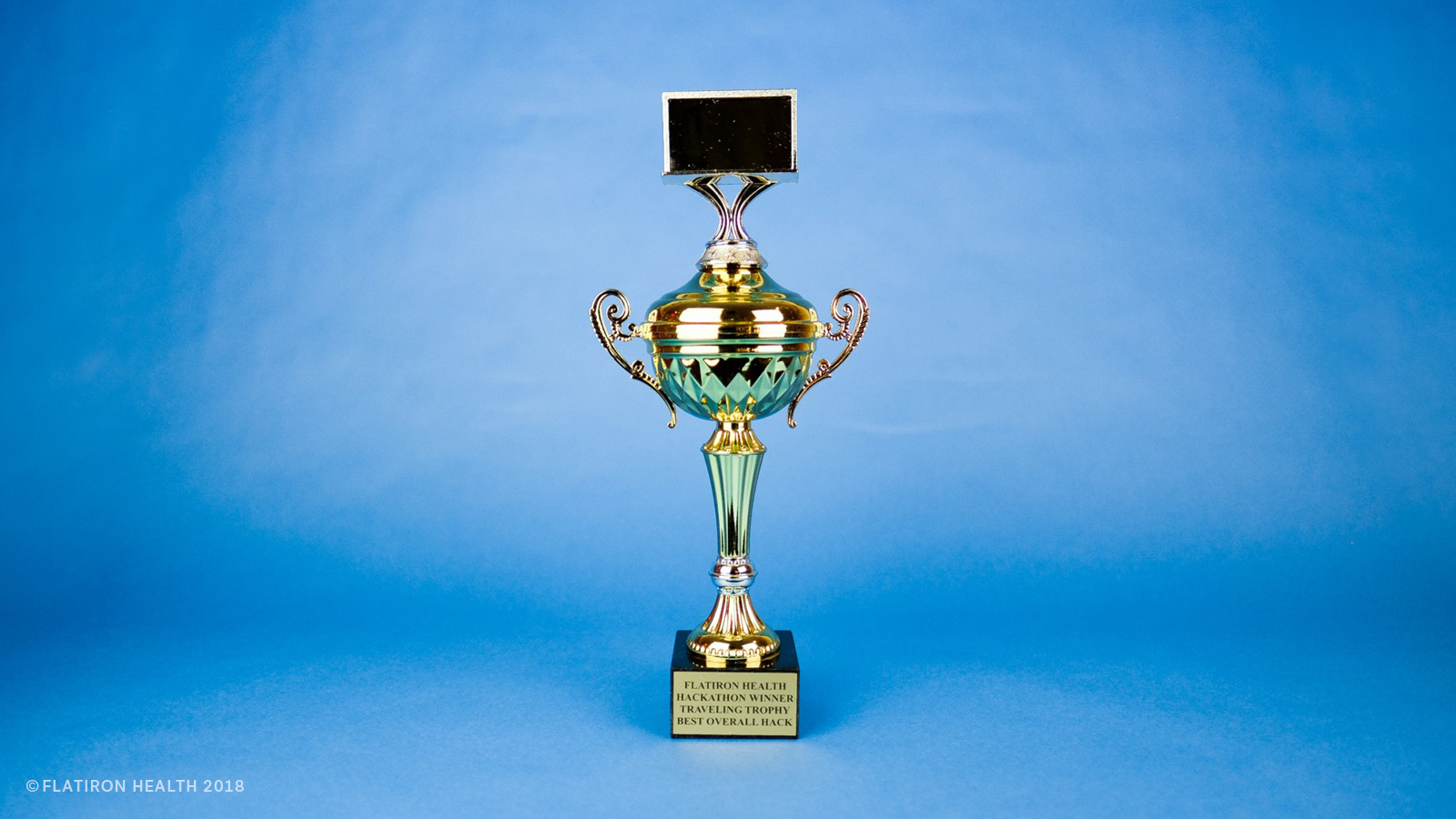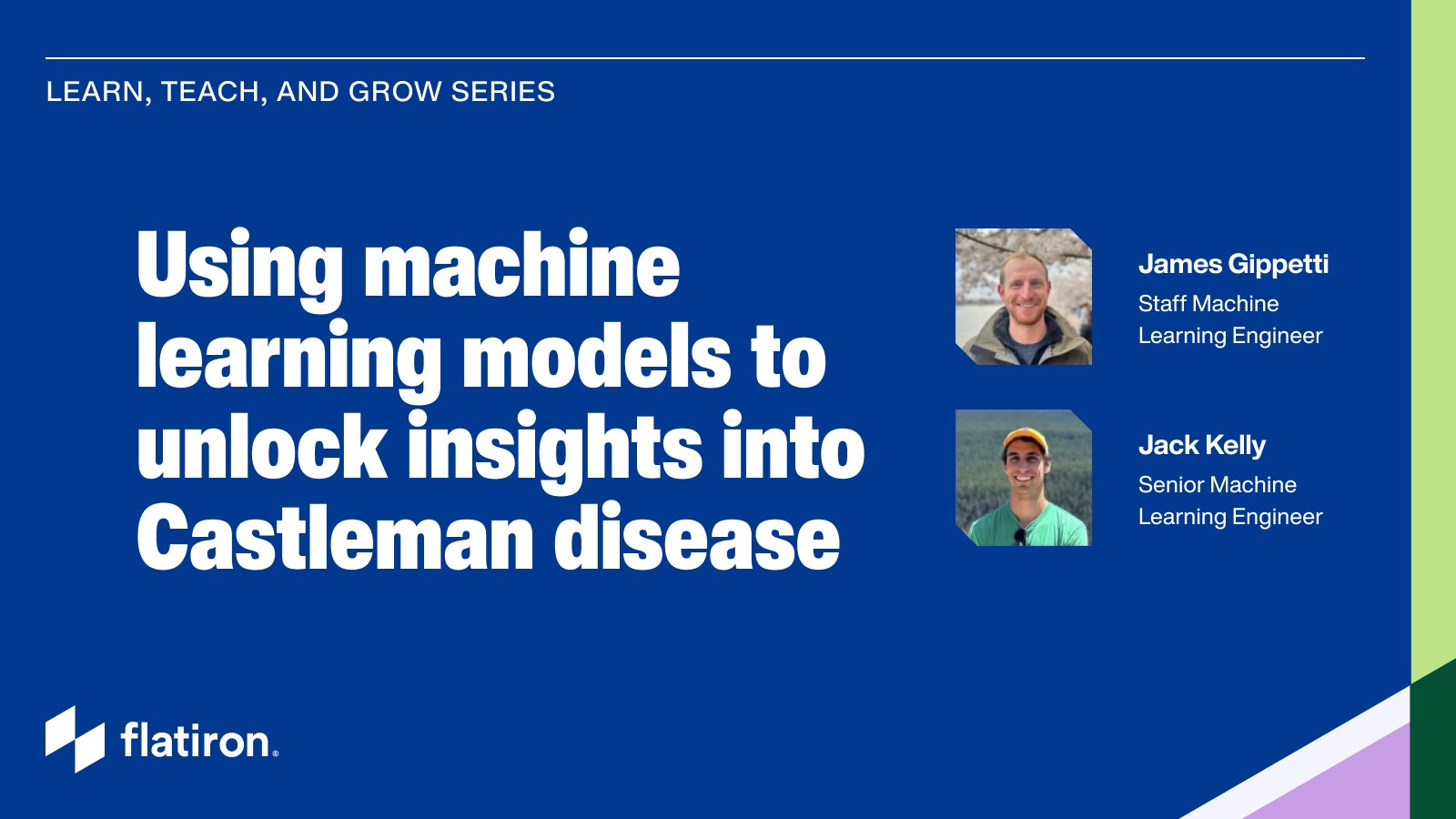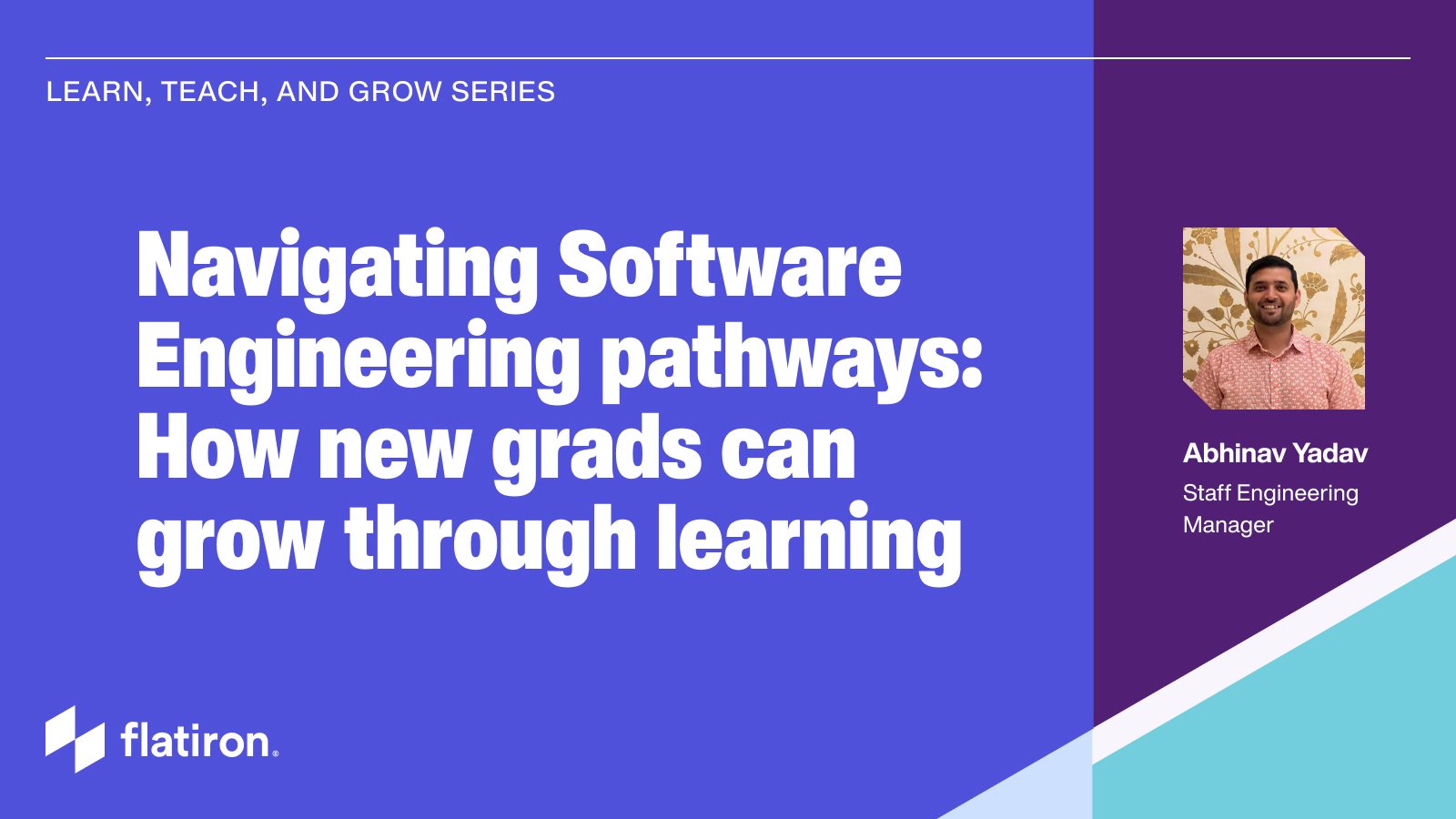In the first part of this blog post series, we talked about the main benefits of running internal company-wide hackathons. At Flatiron, we have found hackathons to be incredibly valuable both to our culture and to our business, as they encourage cross-functional collaboration, allow employees to stretch themselves, help with soft skills development and much more.
In this post, we'll lay out some of the elements that have made our hackathons so successful, which we hope will be helpful for those looking to kick off their own!
The Structure
While there are certainly no hard and fast rules around what a good hackathon looks like, we've had success with a fairly lightweight two-day schedule. Generally, we plan for two full uninterrupted days of hacking, with our kick-off and closing activities on the preceding and proceeding days. These two days give teams just the right amount of time to deliver an output.
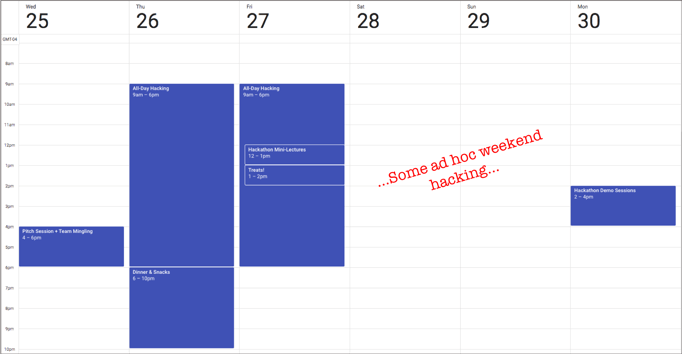
The Pitch Session
On day zero, usually late Wednesday afternoon, the day before the actual hackathon starts, we hold a "pitch session". We kick off the hackathon with some music and a quick introduction by our chief technology officer. We then start "pitching," pulling presenters from the "idea sheet" and allowing ad-hoc presenters to share their ideas. Afterwards, we set out snacks for some mingling, which serves as a great platform for people to lobby for their teams and find additional collaborators.
Two Days, All-Day
Thursday and Friday are then spent hacking, mostly during the day, and occasionally into the night and even into the weekend. We make sure to have enough food on Thursday night to tide over those hungry late-night hackers and often follow that up with a fun treat on Friday afternoon. We also send around a demo sign-up sheet on Friday so that teams can choose their demo time and award category for which they'd like to be considered.
The Demo Session
The following Monday, we set aside two hours in the afternoon for demos.The demo session is a bit more formal than the pitch session. While the pitch session is usually open ended so that anyone can step up and present their idea, for the demo session, we have a bit more structure in place with time limits. This ensures that every team gets a chance to present and that we stay within our two-hour slot. The demo sessions are always the highlight of the hackathon, with people piling into our main meeting space like it's a 2012 Apple keynote, watching teams showcase their hacks, live Tweeting and enjoying some tongue-in-cheek emceeing by our hackathon organizers.
Voting
Finally, after the demo sessions (which are also recorded and made available to watch online shortly thereafter), employees can vote for their favorite hacks in a number of different categories - and the winners receive their trophies at the next monthly company-wide meeting.
Building Hype
Taking two days out of people's schedule once a quarter does not seem like a big deal, but in a fast-moving company like ours, every week and every day might be different from the previous, so blocking out time as early as possible is crucial to get as many employees as possible to participate.
We typically email key stakeholders and team leads with possible dates, gathering feedback to make sure we aren't scheduling over any other major company or external event. We always schedule one hackathon to coincide with our summer internship program. Participating in - and often winning! - a Flatiron hackathon is a great experience for our summer interns and gives them the opportunity to bond with their fellow interns and future coworkers. We then put "save the date" holds on everyone's calendars at least two or three months in advance to make sure employees can schedule major deadlines and meetings around the hackathon. About a month in advance, we begin hyping the hackathon with company-wide emails and Slacks, constantly sharing the ideas spreadsheet, and making announcements in larger team meetings.
We find that by establishing a regular cadence (quarterly for us), people know to look for a Hackathon calendar hold immediately after one completes, garnering excitement and ideas for the next event at the close. We also find this helpful for employees who have a conflict and can't participate this time round, because they know that there will be another right around the corner. Lastly, since many of our employees are remote, planning hackathon dates far in advance gives them a chance to schedule their visits to the office to coincide with a hackathon, so that they can hack with their teammates in person.
Including Remote Employees
Speaking of remote employees: while it is definitely a challenge to ensure that remote employees feel included, we make sure that all hackathon sessions are live-streamed, that remote participants can present via video and screen shares, and that we ship any swag (more on swag below). And as we mentioned in our previous blog post , we love to see collaborations across teams and locations, and encourage that by offering an award for "Best Collaboration Hack".
Evangelize and Educate at Every Chance
While the majority of our hackathon participants are engineers, we believe that cross-functional participation is what makes hackathons at Flatiron so unique. We intentionally introduced awards for "Best Non-Coding Hack" and "Best Collaboration" in order to encourage non-engineers to get involved. Besides the awards, we are always educating employees about the hackathons, e.g. through onboarding sessions on our company culture, announcements at company-wide meetings, pitch and demo sessions held in central spaces in the office, a widely shared ideas document where everyone can freely drop in their project ideas. We find that all of this "guerilla marketing" lowers the barrier to participation for engineers and non-engineers alike. Occasionally, we check out the calendars of less represented teams and ask if we can crash their weekly team meetings to pitch the hackathon and answer questions. Hey, you miss any shot you don't take!
Get Executive Buy-in
At Flatiron, we started holding quarterly hackathons within the first year of our company's existence, virtually as soon as we had enough employees to actually run a two-day event. This early start helped make hackathons an integral part of our company culture, so it didn't take much to convince our co-founders to allow us to scale the event as the company grew. But even if you don't start a hackathon in a company of ten employees, getting buy-in from executives is crucial to anchoring hackathons in your company culture. And by buy-in, we don't just mean getting their permission to block out time on people's calendars and maybe pay for some swag - we mean really getting them involved in and excited about each event. Our co-founders, chief technology officer, heads of sales, head of clinical oncology, to name just a few, are routinely present at the pitch and demo sessions and many even join teams and hack themselves. Running and participating in hackathons is a lot of work, but seeing people like our CEO and our head of clinical oncology excitedly tweeting about it is the best form of acknowledgement and praise.
Don't Forget the Swag and Treats
For our fourth hackathon on Halloween in 2014, aka "Hackoween," we decided for the first time to make t-shirts for all hackers.
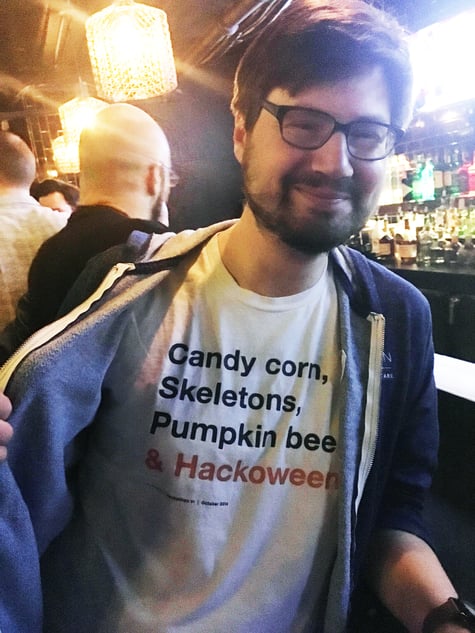
The t-shirts were originally meant for those all-night hackers who needed a fresh shirt for the next day, but the t-shirts have turned out to be an immensely popular part of our hackathons, with employees proudly wearing their "vintage" hackathon shirts around the office all year long. The designs range from purely graphical tees to seasonal, including an "ugly sweater" style holiday edition. During each hackathon, we also offer a "hack" to design the next t-shirt.
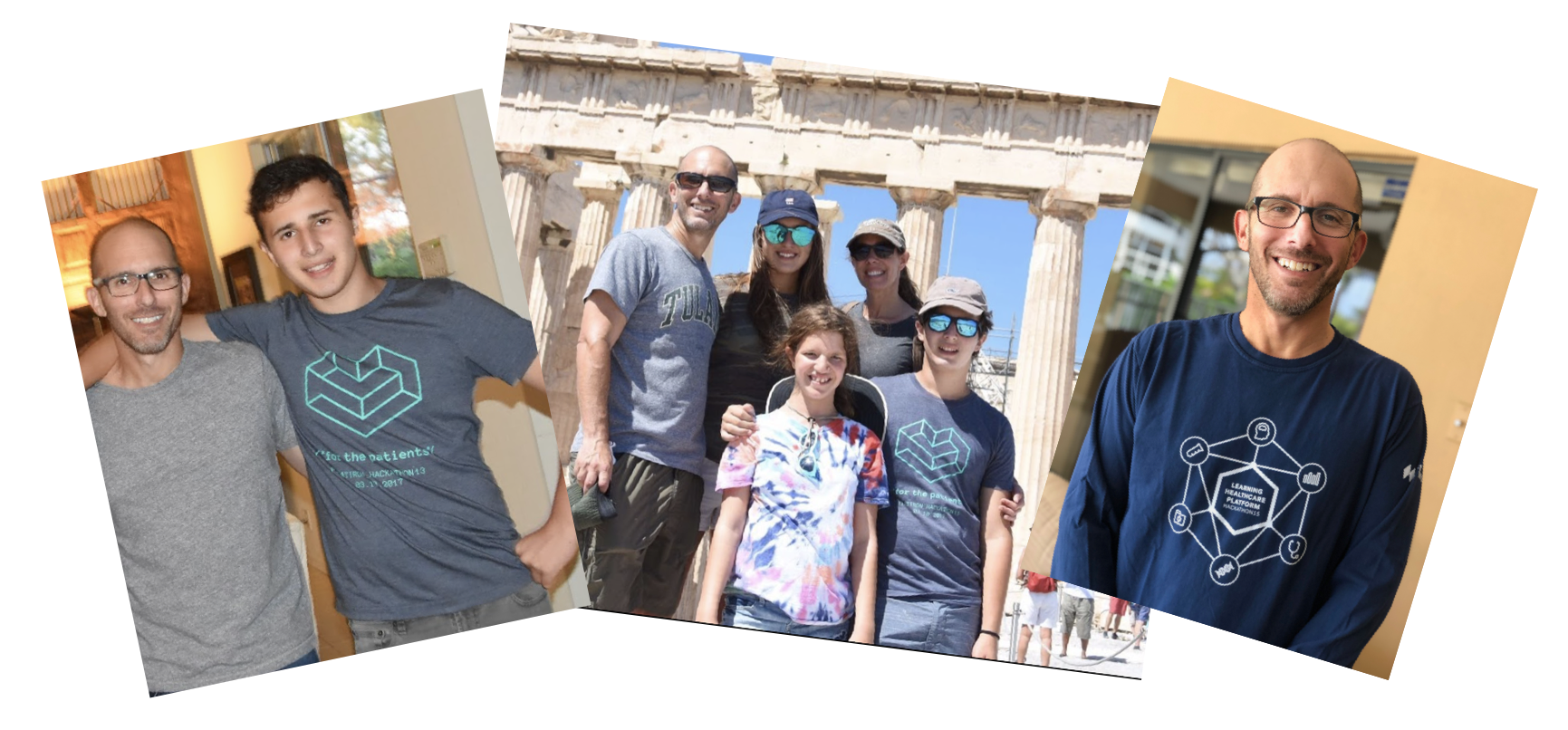
Other treats during the hackathon include food (pitch session dumplings and Thursday night pizza are our tradition) and the occasional stretching session. We've recently also added a round of mini lectures during Friday lunch where employees can present on a non-work related passion or hobby. We've seen talks ranging from "How to choose your favorite dinosaur" to "Introduction to harmonica playing." The mini lectures are slowly becoming a fan favorite. Swag and treats make two days of collaborating and maybe banging your head against a wall a lot more pleasant, and foster a sense of community when you spot a significant number of your coworkers rocking the same outfit.
We hope this post has given you an insight into how we run our internal company hackathons at Flatiron Health. As with so many other things, we started these events really small, with a handful of engineers, a spreadsheet for "Hackathon Ideas" ending with an informal demo session. After many iterations and tweaks (t-shirts, treats, pitch sessions, timing for the demos, categories for awards…), we finally feel like we have a recipe that works well for us.
